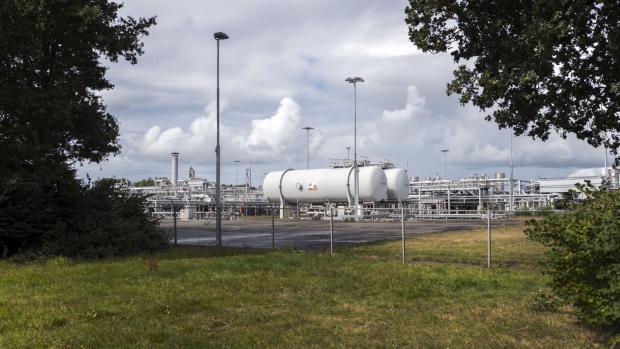Jun 15, 2023
Netherlands Set to Close Europe’s Biggest Gas Field This Year
, Bloomberg News

(Bloomberg) -- The Dutch government is set to permanently shut down Europe’s largest gas field in less than four months, accelerating a closure timeline that may limit its supply buffer as it heads into next winter.
The Groningen field in the northeastern Netherlands will shut on October 1, people familiar with the matter said, asking not to be identified as the plans are still private. The cabinet will make an official decision later this month, a Dutch government spokesperson said.
The Netherlands previously aimed to close the field at the latest by October of next year depending on the geopolitical situation, but officials have faced political pressure over the repercussions from earthquakes it caused.
The field has been a key source of gas for much of western Europe, as well as a backbone of Dutch public finances, since production commenced in 1963. But the site has also caused huge local opposition after hundreds of earthquakes since the 1980s damaged thousands of homes. The move comes days after prime minister Mark Rutte narrowly survived a no-confidence vote following accusations that the government was insensitive to complaints.
Read more: Europe Has a Massive Gas Field, But Dutch Say It’s Off Limits
Dutch front-month gas futures, the benchmark for Europe, jumped more than 30% higher as the shutdown removes one option to boost flows if the region’s energy crisis worsens next winter. While the Groningen fields currently contribute a small amount to Europe’s overall gas output, it’s an important possible supply buffer. Prices have been volatile with outages in Norway stoking concerns about supplies and hot weather boosting demand.
Earlier this year, the Dutch government pledged to spend a total of €22 billion across a 30-year period to compensate Groningen residents. Of the approximately 327,000 homes in the region, at least 127,000 have reported some damage, according to the Groningen Mining Damage Institute. More than 3,300 buildings have been demolished in the area since 2012 because earthquakes have rendered them unsafe.
The Dutch government may also dismantle the gas wells by filling them up with concrete next year, one person said. A maximum of 2.8 billion cubic meters of gas will be extracted from the Groningen field until October as it currently runs on pilot light, which means it’s operating at minimum levels now.
The decision for closure isn’t entirely irrevocable, the people said. If there is another energy crisis or a very cold winter, it would take about two weeks to reopen the wells, they said. That’s enough time for the government to revert its decision, depending on weather forecasts.
From the archive: Earth-Shaking Woes at Europe’s Biggest Gas Field: QuickTake
(Updates with additional context from third paragraph.)
©2023 Bloomberg L.P.






